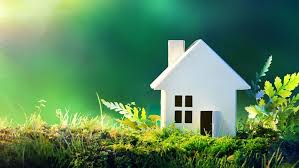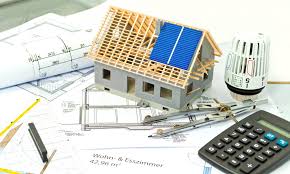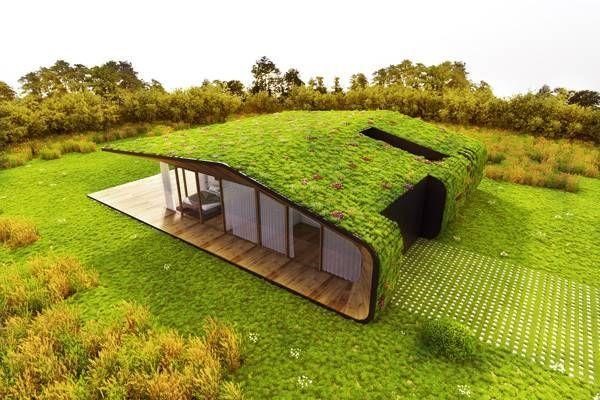As climate concerns grow and energy costs rise, more people are thinking seriously about sustainability — not just in how they live, but where they live. A sustainable home is more than a buzzword; it’s a smart, future-focused investment in both your wellbeing and the planet.
Whether you’re building from scratch or renovating with sustainability in mind, this guide covers key steps and strategies for creating a home that’s eco-friendly, energy-efficient, and built to last.
🌱 What Is a Sustainable Home?
A sustainable home is designed and built to minimize its environmental impact. It uses resources efficiently, produces less waste, and often integrates renewable energy. These homes prioritize:

- Energy efficiency
- Eco-friendly materials
- Water conservation
- Healthy indoor air quality
- Long-term durability
The goal? Lower your carbon footprint without compromising comfort or style.
1. Start With Smart Design
Before you lay the first brick, a sustainable home begins with thoughtful planning.
Key principles:
- Passive solar design: Position the home to take advantage of the sun’s natural heat in winter and provide shade in summer.
- Natural ventilation: Strategically placed windows and vents reduce the need for air conditioning.
- Smaller footprint: A well-designed small home can be more sustainable than a larger, inefficient one.
Tip: Work with an architect or builder who specializes in green building or has experience with LEED or Passive House standards.
2. Choose Sustainable Materials
Materials matter. Opt for building products that are:
- Recycled or reclaimed (like wood, brick, or steel)
- Rapidly renewable (like bamboo, cork, or hempcrete)
- Locally sourced to reduce transportation emissions
- Low-VOC (volatile organic compounds) to improve indoor air quality
Also consider:
- Insulation made from recycled denim or cellulose
- Non-toxic paints and sealants
- Sustainable flooring like bamboo, reclaimed hardwood, or polished concrete
3. Invest in Energy Efficiency
Energy efficiency is at the heart of a sustainable home. The goal is to reduce reliance on fossil fuels and make the most of every watt.
Ways to boost energy efficiency:
- Install high-performance windows and insulation to prevent heat loss
- Seal air leaks around doors, windows, and ductwork
- Use LED lighting throughout the home
- Choose ENERGY STAR® appliances for reduced energy use
- Install a smart thermostat to manage heating and cooling efficiently
4. Incorporate Renewable Energy
If budget and location allow, consider installing solar panels or other renewable energy systems. These can dramatically reduce (or eliminate) your energy bills and carbon emissions.
Options include:
- Solar PV systems for electricity
- Solar water heaters
- Geothermal heating and cooling systems
- Wind turbines (if space and zoning allow)
Even a small solar array can make a big difference over time.
5. Prioritize Water Conservation
Water is a precious resource. A sustainable home uses less of it — and wastes none.
Water-wise upgrades:
- Low-flow fixtures (showerheads, faucets, toilets)
- Dual-flush toilets
- Rainwater harvesting systems for irrigation
- Greywater systems that reuse water from sinks, showers, and laundry for landscaping
- Drought-tolerant landscaping using native plants (xeriscaping)
6. Focus on Healthy Indoor Air Quality
Indoor air can be 2–5 times more polluted than outdoor air, especially in sealed homes. Improve air quality with:
- Mechanical ventilation systems like HRVs or ERVs
- Natural, non-toxic materials
- Houseplants (like spider plants or snake plants) that purify the air
- Regular filter changes in HVAC systems
7. Plan for Long-Term Durability
Sustainability isn’t just about efficiency — it’s also about longevity. Building with durable, low-maintenance materials reduces waste over time.

Consider:
- Metal roofing with a long lifespan
- Fiber-cement siding or brick exteriors
- Durable finishes that resist wear and tear
Think long-term: a well-built sustainable home should last for generations.
Final Thoughts
Building a sustainable home isn’t just a trend — it’s a conscious choice to live more lightly on the Earth. While some features may require upfront investment, many pay off in the long run through lower utility bills, fewer repairs, and a healthier living environment.
Whether you’re planning a new build or simply upgrading your current home, every sustainable choice counts. The planet — and your future self — will thank you.





